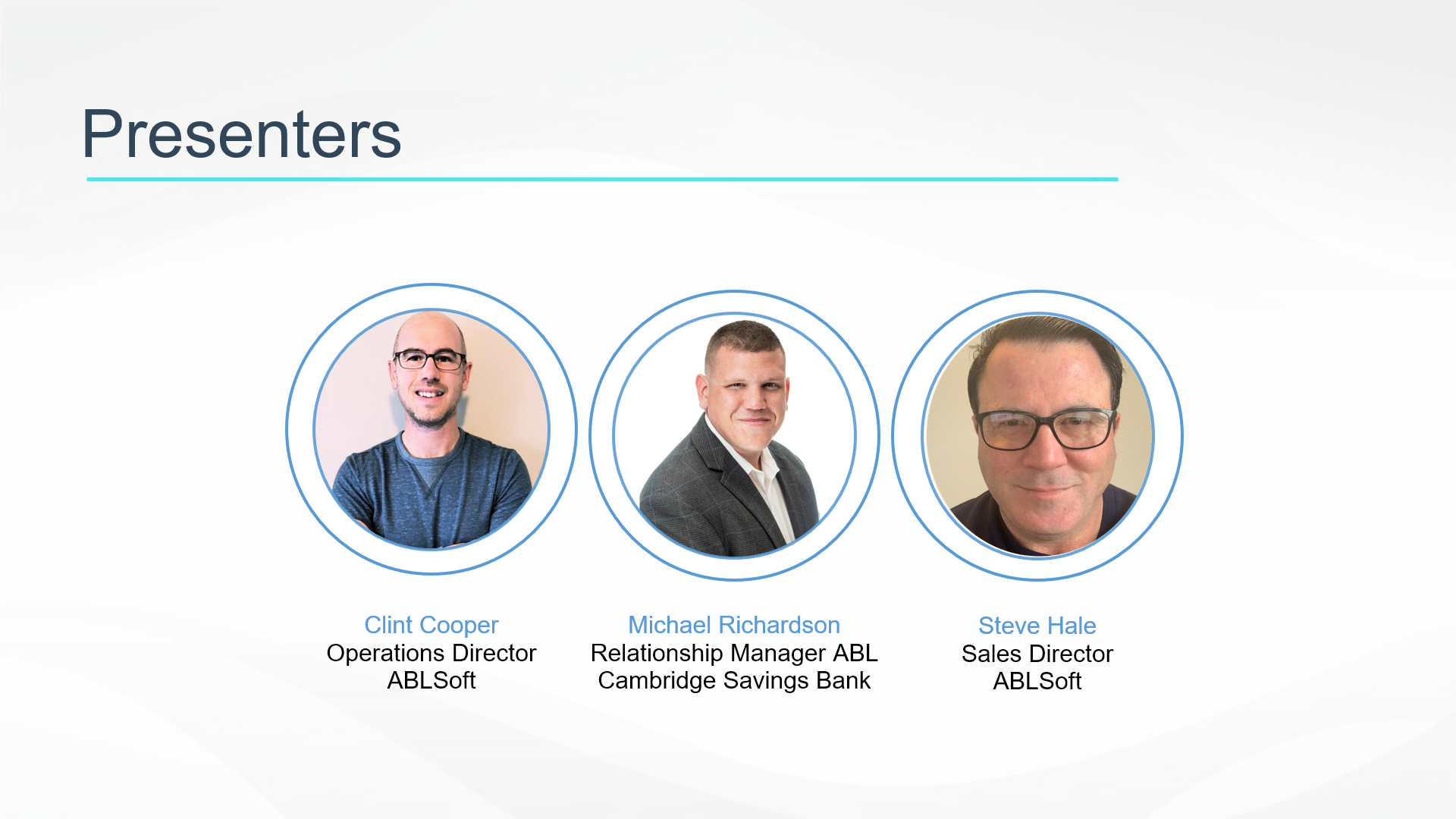Financial institutions that want to remain competitive in today’s market know they must accelerate their digital transformation initiatives. They understand that users demand faster mobile services, personalized products, and transparency in the lending process. In recent years, nimble fintech startups have played a critical role in modernizing the financial space with smarter and more efficient products. Financial institutions and lenders recognize this and are accelerating their digital transformation initiatives to be competitive in this technology age. How can this be applied to asset based lending software?
Software has been instrumental in automating the manual processes and calculations of asset based lending. While some lenders still use Excel and traditional desktop applications to manage their deals, many have moved onto Cloud solutions. With Cloud solutions, lenders now have an additional dimension to manage their loans, from internal monitoring to data analysis to enabling interactive relationships between borrowers and lenders. With a centralized repository for all loan-related data, all users – staff, borrowers, participants, or auditors – can access relevant data to stay informed and make knowledgeable decisions. Adopting a modern Web interface has also been a key differentiator in delighting the borrowers and winning over new deals.
What Can Asset Based Lenders Digitize?
Two significant trends in technology center around more intelligent data and increased automation. This is about harnessing the power of your data to enable advanced analytics and finding opportunities to further automate between systems and processes. The goal is to provide innovative user experiences to lenders for new business growth and greater staff efficiencies. Here are some examples:
- Borrowing Base Certificates (BBC) processing in minutes: Spending time manually calculating ineligibles introduces human error and takes time. Digitally pushing aging information directly from an accounting system will reduce the borrowing base process securely and with fewer human errors, from hours to minutes.
- BBC single source of truth: Rethink the workflow between the borrower and lender, and create transparency and greater trust in the process. Allow the system to manage the BBC on behalf of the borrower and lender, minimizing the manual calculations and reconciliations. Eliminate the back-and-forth that would typically happen when there are discrepancies.
- Workflow automation: Look for more ways to reduce manual processes. For example, streamline the process for notification letters to be sent, acknowledged by the recipient, and recorded.
- System-to-system automation: Automate data flow between systems to get a clear picture of credit qualifications to make intelligent advancing recommendations in minutes. It takes the manual process out, pulling cash balances from a bank, aging reports directly from accounting systems, and payment transactions from an e-commerce site, all in real-time.
- Smarter risk management: Leveraging advanced analytics, get notified about duplicate invoices, discrepancies in the borrowing base, or unmet thresholds.
How can Asset Based Lending companies get started?
Time to market and costs are important to consider when evaluating the next steps to digitally transforming your organization. There are options for choosing the software solution that best meets your needs.
- “Out-of-the-box” ABL product: For a business with general loan structures, an ‘out-of-the-box’ product can work well and be cost-effective, requiring only minimal changes to follow your policy.
- Build from scratch: While you benefit from designing a system exactly the way you want, this can be a costly and time-intensive endeavor. Many software service organizations are available but may lack the specialty lending knowledge to build the details and flexibility to grow with you.
- Lending platform: A hybrid approach can be made by working with an existing ABL software engine that gives you 70-80% of what you need and tailoring specific aspects to match your unique lending structure. This can shorten development time while getting your ideal product at a more manageable cost.
Conclusion
The market almost always rewards lenders who exceed their expectations. The new generation of users expects aspects of their loan process to be fast and friction-free. A financial institution with established data and strong automation capabilities will give customers a much more favorable experience. More than that, these lenders will have better insight into managing risk and opportunity!
The commercial lenders who thrive will be those who find good ways to get more value out of their data flows by automating them with ABL systems.




